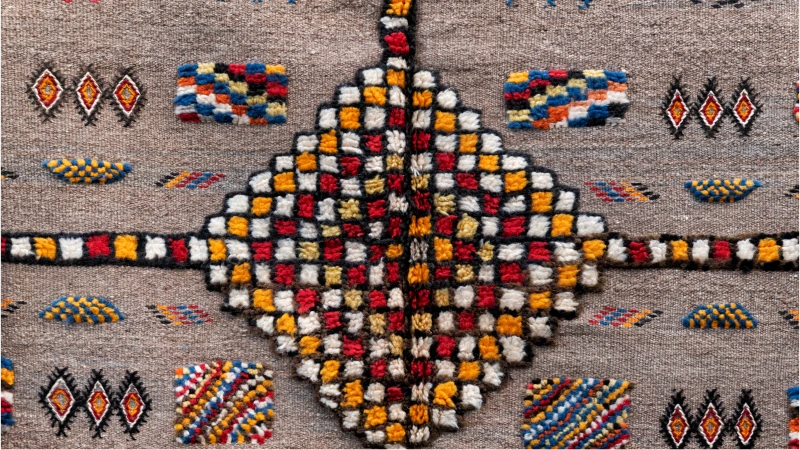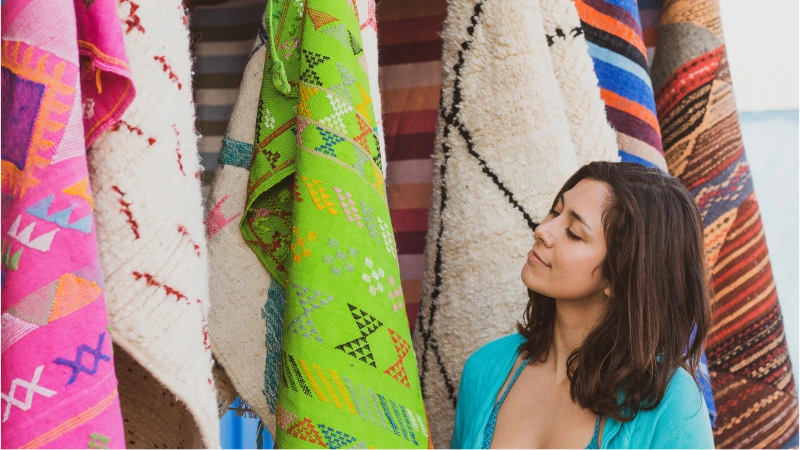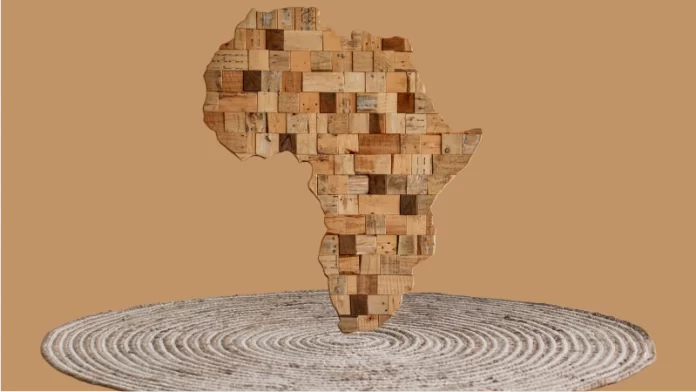The history of Africa’s production of fine handcrafted carpets and rugs is brief. In reality, no country in Africa—except a few countries in North Africa, the most important of which are Morocco, Tunisia, and Egypt—is especially widely recognized for its carpet-making.
Considering these nations’ typically temperate weather conditions, this shouldn’t be all that surprising. But in recent years, many businesspeople and native firms in South Africa have been hand-designing and creating distinctively African carpets, and the market for these carpets keeps gradually rising. The business for handwoven rugs, Since 2003, has created rugs according to client requirements using both wool and leather. Many of these rugs include warm African-inspired hues and typical African patterns as their basis for design.
Most of the woolen rugs are sold from the ground up, starting with unprocessed wool that is initially whipped into yarn and then created using an excellent integration technique.
Small sections of flexible leather are used to create flat-woven leather rugs. They are much easier to maintain and need less maintenance than woolen rugs. They are also better for allergic reactions because they gather less dust and debris.

Here are some key points about carpet and flooring in Africa
1. Market Growth: The Carpet and flooring market in Africa has been expanding, driven by factors such as urbanization, population growth, and rising disposable incomes. As more people move to urban areas, the demand for housing and commercial spaces has increased, leading to higher demand for carpet and flooring products.
2. Local Production: Some African countries have started to invest in local carpet and flooring production to meet the growing demand. This has led to the emergence of domestic manufacturers, contributing to economic development and job creation.
3. Imported Products: While local production is growing, many African countries still rely on imports for a significant portion of their carpet and flooring needs. This presents opportunities for international manufacturers and exporters to enter the African market.
4. Sustainability: There is a growing awareness of environmental sustainability in the carpet and flooring sector. Consumers and businesses in Africa are increasingly looking for eco-friendly and sustainable flooring options, which can include products made from recycled materials or those with low environmental impact.
5. Technology and Innovation: Advancements in technology have also influenced the sector. Digital printing technology, for example, has allowed for more intricate and customizable designs on carpets and flooring. Innovations in materials and installation methods have improved the durability and aesthetics of products.
6. Challenges: Despite growth, the sector faces challenges such as price sensitivity, competition, and the need for infrastructure development in some regions to support the industry’s growth.
Approximately 47% of Africa’s population identified as Muslim and this is a big market for low price prayer rugs.

An Indian Model for Advancing the African Carpet and Flooring Industry
When examining the list of top carpet-exporting nations worldwide, India stands prominently at the forefront. The growth and success of India’s carpet industry can be attributed to its abundant and affordable workforce, a strength that Africa also shares with its pool of cost-effective labor.
India’s carpet industry predominantly leans towards the production of hand-woven carpets and various textile rugs crafted from materials like jute and other fibers. Unlike some regions, India does not heavily rely on modern technologies and expensive industrial machines for machine-made carpet production. Instead, a significant portion of the industry relies on human labor. Operators utilize small carpet pile weaving machines or tufting guns to mechanically place carpet piles on the surface.
Considering the prevalence of hand-tufted carpets in India, it becomes evident that this model could be a valuable blueprint for the African continent. It presents a compelling opportunity for Africa to nurture and expand its own carpet and flooring industry.
Africa’s Abundant Cultural and Design Heritage
While the tradition of carpet weaving may not be deeply rooted in African countries, there is unquestionably a wealth of history and distinctive indigenous designs and patterns across the continent. These distinctive themes are prominently displayed in the vibrant and native attire of African clothing. Over the past decade, African trends have made their presence felt in numerous countries worldwide.
This rich cultural heritage and the indigenous artwork found in African nations offer a unique opportunity for the carpet production industry. Leveraging these culturally significant designs could not only cater to a significant portion of the African market but also open doors for exports to foreign countries.

Advances in Digital Carpet Printing
The utilization of digital printing machines for machine carpet production is gaining traction and offers promising prospects for the African continent. Notably, Tapidor, based in Algeria, stands as a successful and pioneering example, having equipped its factory with these machines in 2020. Furthermore, Oriental Vivirs Egypt is another African company effectively harnessing digital carpet printing technology.
The evolution of digital printing machines has led to a reduction in water consumption during the printing process, a significant advantage in Africa’s arid climate. This technological advancement aligns well with the continent’s needs.
Although the initial investment for digital printed carpet production may be relatively high, it yields cost-effective solutions for mass-produced, budget-friendly carpets, offering an extensive array of designs and patterns. With the incorporation of fashion into the printed carpet industry and the growing demand for affordable options in the African market, this technology has the potential to find global markets in the years ahead.
Untapped Opportunities in Africa: Mosque Carpets and Recycled Carpets
With a Muslim population of 400 million in Africa, there exists a largely untapped market for mosque carpets and those designed for religious rituals. These carpets are typically affordable and have a straightforward production process, making them ideal for production in African countries with significant Muslim communities.

The Recycled Carpets Market: A Growing Trend
Undoubtedly, recycled products represent a significant trend in today’s textile market, with support from various sectors and brands. In Africa, the establishment of startups specializing in the production of recycled carpets presents a promising opportunity. Africa is abundant in second-hand garments, and its accessible labor force makes it an ideal location for such ventures.
For instance, a small-scale startup in Africa can collect old and discarded jeans, wash and cut them, and transform them into carpets comprised of up to 40 pieces of denim cuttings. These recycled carpets can then be exported to regions like EUROPE and America, proudly labeled as ‘Recycled Carpets Produced in Africa.’ Additionally, the utilization of leather cuttings can even enable the production of leather rugs with lightweight underlays, further expanding the possibilities in this industry.”
Empowering African Carpets and Rugs: A Simple and Swift Solution
As previously mentioned, the most efficient path for carpet and rug development in Africa often leans towards labor-intensive production methods, including handwoven carpets and Indian tufted carpets. However, Africa faces a significant challenge in terms of a shortage of skilled weavers.
One viable solution involves the collaboration of international development organizations such as GIZ and USAID to provide training and skills development programs for the workforce in Africa. Additionally, companies looking to invest in this sector can take the initiative to recruit and train the workforce to meet their specific standards before establishing production workshops. Drawing inspiration from countries like Turkey, India, Iran, Nepal, and Afghanistan, known for their expertise in decorative handwoven art, could provide valuable modeling opportunities for the development of this industry in Africa.”




